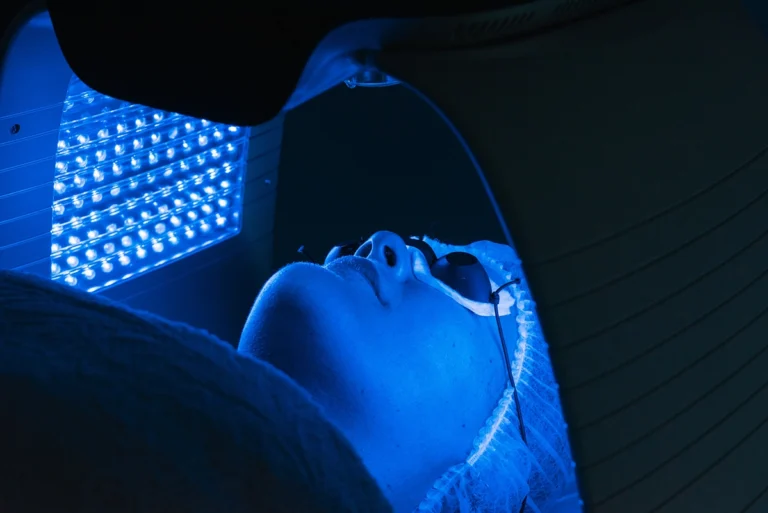
Can cysts be cancerous? Are they dangerous?
Many people wonder, “What does a cyst look like—and how can I tell if it’s cancerous?” While most skin cysts are benign, some can resemble cancerous lumps or even mimic melanoma in appearance or texture. This article clarifies how to tell them apart.
So, what’s the difference between cysts vs. lesions? Cysts are normally benign, but they may derive from deeper issues (including certain types of cancer) or become uncomfortable as they grow. This often raises questions like, “Can a cyst be cancerous?” or “What does a cancerous cyst look like?” While rare, sebaceous cysts, epidermoid cysts, and other skin lumps can sometimes resemble basal cell skin cancer or even melanoma, especially if they grow rapidly or change color. The most important thing to keep in mind is that if you notice something unusual or concerning on your skin, it’s always best to schedule an appointment with your doctor. A professional can examine the growth and help determine whether it’s a harmless cyst or something that may require further evaluation.
When cysts form close to the surface of the skin, questions can arise as to whether you’re dealing with a sebaceous or non-sebaceous cyst or skin cancer. Although biopsy is almost always required to distinguish cysts vs. cancer in practice, there are a couple of common signs that can help you get a better idea of what you’re dealing with. Can a cyst turn into cancer? Is it a cyst or skin cancer – how do you know? Find out more from GentleCure below.
Still, many people ask “Can a cyst be cancerous?” or “What does a cancerous cyst look like?” While uncommon, certain cysts—such as sebaceous cysts or epidermoid cysts—may raise concern if they grow quickly, change color, or become painful. These symptoms can sometimes resemble those of skin cancer, including basal cell skin cancer or even melanoma.
Cysts vs. Cancerous Cysts on Skin
If you’re concerned about a new growth on your skin, scheduling an appointment with a doctor is always a better idea than trying to diagnose the issue at home. Although a physical inspection and a variety of imaging techniques can help to indicate what kind of lesion has arisen, most examinations will eventually lead to a biopsy. Below, we’ll cover some more details that’ll help you answer the question, “Is it a cyst or skin cancer?”
- Can cysts be cancerous? Cysts are normally benign, and they generally have different causes than cancerous lesions, but cancerous cysts on the skin are not unheard of. Still, these two types of growth should usually be considered as separate conditions.
- Skin lesions tend to be firmer than cysts, which often move or change shape with pressure. If your growth does not move beneath your skin, it is more likely to be a lesion than a cyst.
- A small pore is often visible on the end of a cyst, but this is not necessarily the case with lesions.
- Smooth cysts without solid portions are usually benign. Uneven cysts with solid portions may be either benign or malignant; closer inspection will be needed. A very firm lump is more likely to be a lesion than a cyst, but more tests will be needed to determine if it is benign or malignant. Lipomas and warts are common benign lesions that may or may not resemble cysts.
- A thicker material may drain from some cysts, but it is unwise and unsafe to try and remove them at home. Surgery is the only effective means for removing cysts. Additionally, an outright rupture (with or without bleeding) may be a sign that the growth is not a cyst.
- Basal cell skin cancer, a common skin cancer, may sometimes present as a small bump. Sebaceous gland skin cancer (which is very rare) also presents as a small lump and may be mistaken for a cyst. However, if a lump near or beneath your skin turns out to be cancerous, you might also be dealing with another type of cancer, and not skin cancer proper.
- Additionally, some cysts that appear near the surface of the skin are the result of disturbances produced by non-skin cancers, and these cysts aren’t necessarily related to skin cancer at all.
When distinguishing between cysts vs. lesions, and cysts vs. skin cancer, your doctor will ask you about the lump’s origins, duration, changes, and associated pain. If a lump bleeds, changes color, grows quickly, or causes pain, it’s a good idea to have it examined at the earliest opportunity.
Are Sebaceous Cysts Ever Cancerous?
As noted above, cancerous cysts on skin are rare, but not non-existent. A cyst can be cancerous, or it may indicate the presence of cancer. Although your skin ailment will most likely turn out to be one or the other (cancer or a cyst), the question can be a little more complex in some cases: for example when deciding if you’re dealing with a sebaceous cyst or skin cancer.
Are sebaceous cysts ever cancerous? Can a cyst become cancerous? Your doctor may recommend closer investigation, especially if any of the following apply to you:
- Your sebaceous cyst has signs of infection or inflammation
- Your sebaceous cyst is larger than five centimeters in diameter
- Your sebaceous cyst recurs quickly after removal
Other kinds of cysts may or may not be linked to cancer; your doctor will determine on a case-by-case basis.
FAQ: Cysts vs. Skin Cancer
Cysts are typically benign, soft or rubbery sacs located just beneath the skin, often movable. They are filled with fluid or tissue. Skin cancer, such as basal cell or squamous cell carcinoma, involves abnormal cell growth, resulting in lesions that are firm, fixed, and may exhibit growth, bleeding, or changes over time. While cysts are generally harmless, skin cancers necessitate immediate medical attention. In rare instances, a cyst may become cancerous.
Most cysts are benign and do not become cancer. However, rare types of cancer—like sebaceous skin cancer or cystic basal cell skin cancer—can resemble common cysts. It’s important to monitor any lump that grows quickly, changes in shape, becomes painful, or appears solid rather than soft. Unlike typical cysts, these lesions often lack a central pore and do not resolve on their own.
Key comparison points:
Mobility: Cysts tend to move under the skin; cancerous growths are usually fixed.
Texture: Cysts feel smooth and are often compressible; skin cancers tend to be firm or hard.
Pore or center: Many cysts have a visible opening or dimple; cancerous lesions typically do not.
Growth: Cysts may remain stable or grow slowly; skin cancers often grow persistently or change rapidly.
If a lump shows multiple warning signs—firmness, rapid change, bleeding—it should be evaluated by a dermatologist.
Basal cell skin cancer can appear as a dome-shaped bump similar to a cyst. Sebaceous skin cancer may also mimic cysts, especially near oil glands on the face or scalp. In such cases, a biopsy is often necessary to confirm the diagnosis. Unlike cysts, these cancers may ulcerate, bleed, or recur after removal.
While both cysts and lesions can present as lumps, they differ structurally. Cysts are enclosed sacs filled with fluid or semi-solid material. Lesions are solid masses caused by abnormal tissue growth. Lesions can be either benign or malignant. A very firm, non-mobile lump that grows or changes is more suggestive of a lesion than a simple cyst.
While only a medical evaluation can provide certainty, these signs can help differentiate:
Cysts: Typically smooth, round, and fluctuant (can be squished); often have a visible central pore and may drain or rupture.
Skin cancer: Irregular in shape, often discolored or pearly; tends to persist or worsen; more likely to ulcerate, crust, or bleed.
If a lump doesn’t heal, changes appearance, or behaves unusually, seek professional assessment
Yes. Any cyst that becomes firmer, larger, painful, or discolored should be checked by a healthcare provider. While changes may result from infection or rupture, they can also indicate a misdiagnosed lesion. Unlike benign cysts, that may rupture, drain, or shrink spontaneously, suspicious lesions do not usually regress or resolve without treatment.
Consider GentleCure™ for Common Skin Cancer Treatment
If your new skin growth turns out to be a common skin cancer, you should know that you have options. If you’re interested in treating your cancer without the risk of the surgical scarring that comes with some procedures, GentleCure may be a treatment option for you. Learn more today.








